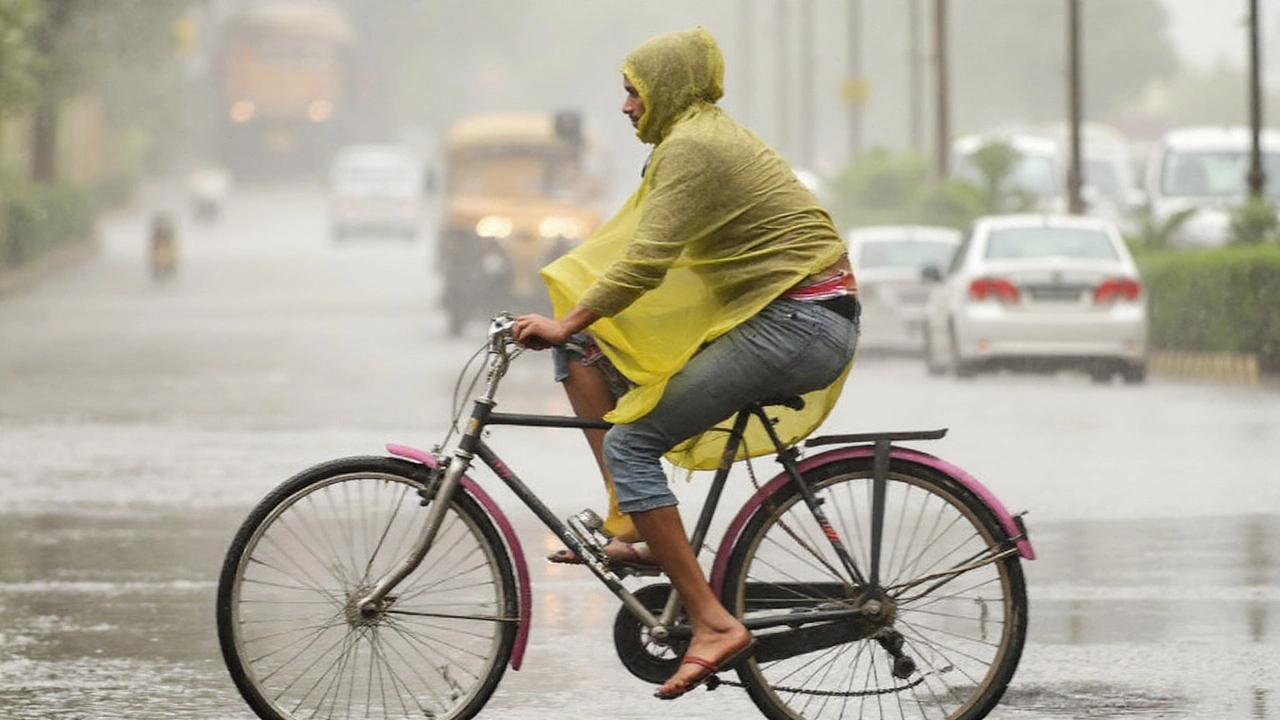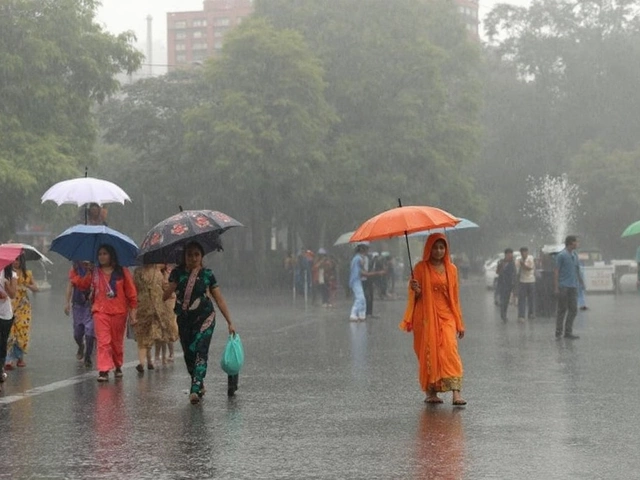Bihar weather alert: What we know for 21 August
Lightning kills more people in India than any other weather hazard. That’s why the chatter about a possible Aug 21 alert for seven Bihar districts is getting attention. Here’s the status: as of publication, no official India Meteorological Department (IMD) bulletin naming seven specific districts for Aug 21 has been released publicly. If you’ve seen posts claiming otherwise, treat them as unverified until the Patna Meteorological Centre or IMD’s national desk issues a district-wise alert.
Even without a named alert, the setup for late August in Bihar is familiar: warm, sticky days, quick-building clouds, and evening rumbles. Forecast guidance for August 2025 points to daytime highs around 28–35°C across much of the state, with 8–15 days of rain this month—typical monsoon math. That means thunderstorms can pop up fast, especially after a sunny, humid morning.
How do official warnings work? IMD issues color-coded advisories—Yellow (watch), Orange (be prepared), and Red (take action). On stormy days, the Patna centre also pushes “nowcast” alerts that focus on the next 3–6 hours, often naming specific districts and nearby blocks. These short-fuse updates are the ones that flag lightning and gusty winds. The Bihar State Disaster Management Authority and district administrations usually rebroadcast those messages through text, loudspeakers, and local radio.
Timing matters. In August, the riskiest window for lightning in Bihar tends to be mid-afternoon to early night, roughly 2–7 pm, when heat and humidity feed towering storm clouds. Storms can bring frequent lightning, bursts of rain, and brief but strong wind gusts. You might get blue skies at noon and a dangerous cell by 4 pm. That’s why checking for nowcast updates a few times a day is smart, not just in the morning.
If a seven-district warning is issued for Aug 21, expect it to carry a color code, a time window, and a list of districts. Until then, focus on the risk pattern: scattered thunderstorms are likely somewhere in the state on most late-August afternoons, and lightning can strike many kilometers from the rain core.

Lightning safety and how to verify alerts
First, how to confirm any Bihar weather alert you see shared online:
- Check IMD updates: Look for the daily state bulletin and the short “nowcast” for your district from the Patna Meteorological Centre.
- Use the apps: Mausam (IMD) gives color-coded alerts, while Damini pushes lightning proximity notifications based on your location.
- Follow local channels: District administration and disaster management teams post advisories; local radio often reads them on air.
- Watch the clock: Re-check around midday and mid-afternoon. That’s when nowcast alerts most often update.
Next, simple steps that cut risk right away:
- Follow the 30/30 rule: If the time between a flash and thunder is under 30 seconds, go indoors. Stay there for 30 minutes after the last thunder.
- Choose safe shelter: A proper building or a fully enclosed metal-topped vehicle is safe. Sheds, tin roofs, verandas, and trees are not.
- Unplug and avoid wired devices: Use phones on battery power; steer clear of corded electronics, metal taps, and plumbing during storms.
- Stay off open fields and rooftops: Move away from ponds, paddy fields, and lone trees. Put down umbrellas with metal tips and long tools.
- If you’re caught outside with no shelter: Crouch low with feet together; don’t lie flat. Spread out if in a group to reduce multiple injuries.
- For farmers and outdoor workers: Plan breaks for the late afternoon window. Keep a nearby solid shelter for quick retreat.
- For schools: Stop outdoor activities at the first thunder. Keep children indoors until 30 minutes after the last thunder.
- For cyclists and motorcyclists: Get off the road and into a safe building. Bikes and open vehicles offer no protection.
Power and communication tips that help during quick-hitting storms:
- Charge phones and power banks before the afternoon.
- Use surge protectors where you can; unplug sensitive gear if a storm is close.
- If anyone relies on powered medical devices, have a backup plan ready for short outages.
What to watch on Aug 21: humidity building through late morning, cloud towers growing on the western or southern horizon, and rising winds ahead of a storm. If thunder is audible, act as if lightning is already close—because it often is. Keep an eye on successive nowcast updates; a district not named at noon can still get flagged by 3 pm.
We’re monitoring IMD and district channels for any verified district-wise alert for Aug 21. If a bulletin names seven districts for lightning risk, expect rapid updates from local authorities and broadcast media. Until then, plan your afternoon with flexibility, check for fresh nowcasts, and move early when the sky starts talking.








